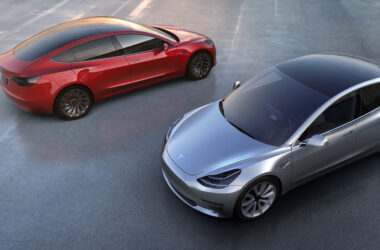Sam Altman wrote a short post which questions a premise: Why aren’t today’s startups more innovative? He notes that society has benefited from the consumer-centric technological focus in the last decade; starting with the smartphone and a persistent data connection, we have enabled communication and transportation, while disrupting industries from hospitality to media – which had enjoyed decades of stability – in a matter of years.
I’d say that the connected world has enabled much more convenience for the average customer, certainly for the technologically fluent in first-world economies1 but also having a select few technologies trickle down to poorer folks as well. These services and products were available before the app economy, but they’ve just never been this easy, fast, and cheap. Consumer technology has, for better or worse, been hammering away at its perceived nails of inefficiency.
Given that the technology industry has been one of the few bright spots in an otherwise stagnant economy2, the expectations for technology have ballooned – free messaging is great, but what about flying cars and helper robots? Some of the sentiment can be attributed to the monumental leaps of progress made during the space race in the 60s and 70s, a natural extrapolation in that direction of aspirational, awesome spectacle. But behind the criticism is a genuine concern about pushing boundaries: not breaking just political or economic or business limitations, but striving to improve our understanding and mastery against the stuff of hard sciences, accelerating our discovery of the biological and chemical and physical.
When reminiscing about our earlier space-faring days, we want to see our leaders pit humanity not against itself, but against the forces of nature. A comet landing 10 years in the making still captures so much interest because it’s an impressive feat against the vastness of space, a much more formidable adversary than even the most dictatorial, controlled communications barricade.
Innovation within the physical world is hard and expensive. In computing, we’ve only been recently able to work with hardware as easily as software. Still, gadget development rests largely on the backs of multinational companies with huge R&D budgets3, firms that have iterated on their processors and microchips for decades. Timelines stretch out, usually not providing any breakthrough for a decade or longer. At a time when both consumers and investors are expecting faster product cycles, pushing for projects on a multi-annual timescale is mostly left as a public funding exercise.
Fortunately, some of us with the means to make the right long-term investments in the future continue to dream big, and their actions are the reason to remain cautiously optimistic4.
There is, however, the persistent follow-up concern of how this convenience is leveraged from an increasingly exploited labor force.↩
Particularly when so many of our companies are awash in money, so much so that they sometimes have trouble figuring out an efficient use of their capital.↩
Building a semiconductor fab now costs upwards of $8 billion; try to get there with your startup series A investment.↩
Peter Thiel’s worldview quadrant is a good summary of this attitude.↩



